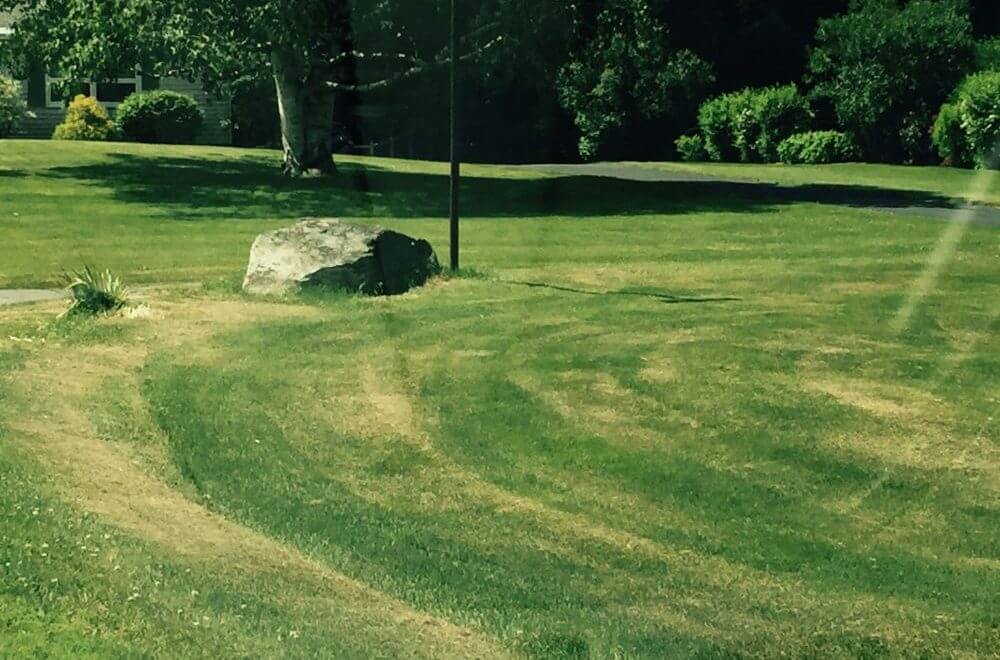As we move into hotter summer weather, what you do or don’t do to your lawn can have an enormous impact on its quality and color. Here are a few summer lawn tips that can either prevent or reduce unnecessary browning.
Mowing
Since grass is comprised mainly of water, mowing it when hot or dry can cause a tremendous amount of water loss and quick browning. The cut leaf blade losses water and if the soil is already dry, there is no reserve to help the mowing-cut heal. Mowing your lawn when the heat is above 85 degrees often creates a devastating browning, occurring in about a day.
Once your lawn is brown, it usually take weeks of regular rainfall and/or irrigation to help replace the lost water and get new leaf blades growing. Your lawn can literally go into shock if it is mowed under low soil moisture and/or high air temperatures.
Mowing Height
Compounding the lawn browning issue even further is setting your blade too low, below 2”. Scalped lawns not only brown out and stop growing, but they can no longer keep the soil cool. The lower the cut, the hotter the soil becomes. Once you enter the 1.5” mowing range, the soil heats, harming the grass you want and allowing crabgrass and weed seeds to germinate. During the summer months, set the mowing height to 2.5 to 3”. This is my number one recommendation for a healthy lawn and the one I see most often neglected.
The resulting double whammy of mowing and mowing too short during hot weather can create long-term damage and a brown lawn for weeks, if not months. You are far better off not to mow for a few weeks and lightly irrigate versus just mowing because it’s the day you do it, regardless of need or air temperature.
Irrigation
Irrigating in the late afternoon or evening during high heat or humidity can greatly increase the odds your lawn will develop brown patch disease. Brown patch is a lethal turf disease that thins out grass quickly – sometimes overnight. Many fungal diseases favor high humidity and moisture, be it spring or fall. During periods of high heat and humidity, having a wet lawn overnight increases the likelihood of brown patch exponentially. Water in the morning if possible and skip a day to let things dry out. This adds needed moisture to the soil while allowing the leaf blades to dry out.
These three easy-to-follow tips (holding off on mowing, using the proper mowing height and watering in the morning) can prevent a nice green lawn quickly turning into a brown lawn.

Summer Lawn Tips
Tags:
chippers
, brown lawn
, dry lawn
, upper valley lawn care
, nh lawn care
, vt lawn care
, lawn tips
, how to water lawn
, lawn mowing
, dry grass

